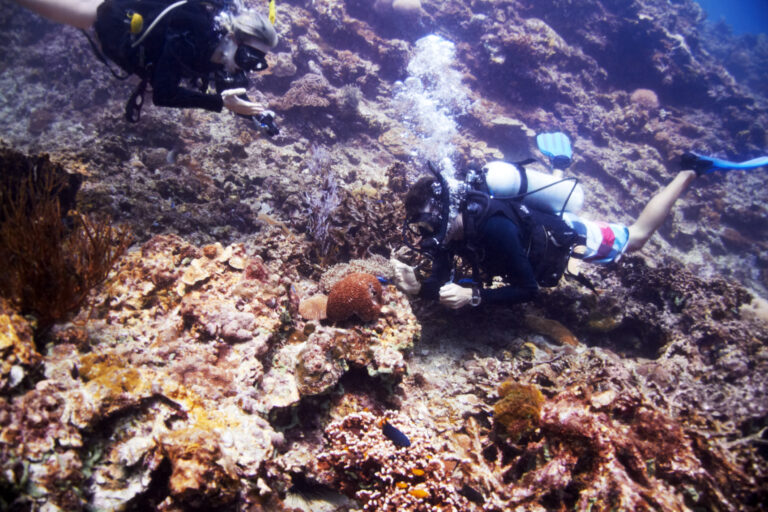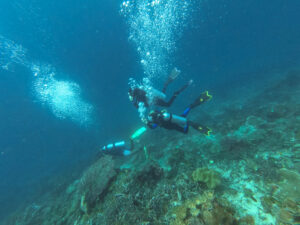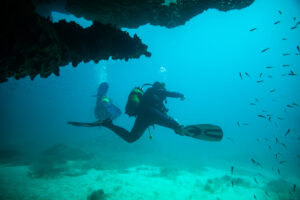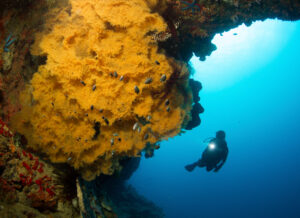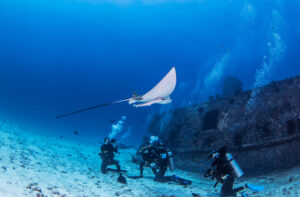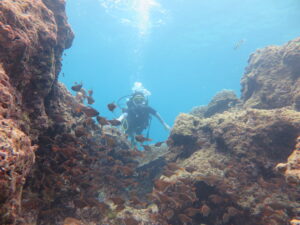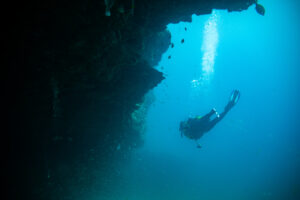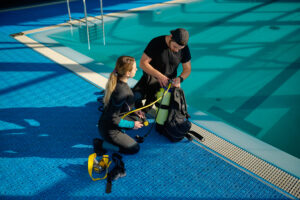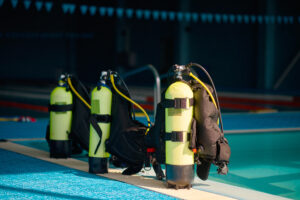What is it to Thumb the Dive?
“Thumb the Dive” is a scuba diving term that signifies the need to terminate a dive at a point or time other than the initially planned turning point. Divers may use this signal in a variety of situations, most commonly when a diver encounters unexpected or dangerous circumstances underwater. These could include, but are not limited to, equipment malfunctions, adverse changes in underwater conditions, or health problems of a diver.
Origin and Use of the Term
The phrase “thumb the dive” is derived from the underwater hand signal used by divers to communicate the need to end a dive. This signal is performed by extending the thumb upwards, mimicking the universal gesture for “up” or “ascend.” In the context of scuba diving, this action translates to a non-verbal communication signal that it’s time to ascend and terminate the dive. The simplicity and universality of this gesture make it easily recognizable and understood, despite the range of potential situations that might necessitate its use.
Significance in Dive Planning
Dive planning is a critical component of safe scuba diving practices. It involves determining the intended depth, duration, and location of a dive, considering factors such as air consumption rates, no-decompression limits, and potential hazards. While a dive plan establishes a roadmap for the dive, it is not immutable. The ability to adjust the plan mid-dive, signaled by “thumbing the dive,” is an essential aspect of dive safety. This flexibility allows divers to prioritize their well-being over strict adherence to the initial plan, fostering a safer and more responsive diving environment.
Situations Requiring Thumbing the Dive
Divers might need to thumb the dive under a variety of circumstances, including:
Equipment Malfunction
Scuba diving relies heavily on equipment, and malfunctions can pose significant risks. Common issues include regulator free-flow, buoyancy compensator device (BCD) failure, and rapid air loss. When such issues arise, it’s often safer to terminate the dive and surface to address the problem.
Health and Comfort
Even seemingly minor health issues can become serious underwater due to pressure changes and the physical exertion involved in diving. Examples include ear equalization issues, cramps, nausea, and panic. When a diver experiences any discomfort, it is crucial to thumb the dive to prioritize health and safety.
Environmental Factors
Underwater conditions can change quickly and dramatically, affecting visibility, current strength, and temperature. When changes make the dive too challenging or hazardous, divers should thumb the dive to avoid unnecessary risk.
Safety and Buddy System Implications
Thumbing the dive is not only a personal decision but also an essential communication within the buddy system. When a diver gives the signal, their buddy must acknowledge it and ascend with them, maintaining close proximity to assist if needed. This shared responsibility underscores the importance of the thumb signal in maintaining diver safety.
Training and Certification
Recognizing and appropriately responding to the thumb signal is a fundamental skill taught early in diver education. This training ensures that all divers understand the meaning and importance of the signal, promoting safer diving practices. Certification agencies, such as PADI, NAUI, and SSI, include this vital communication tool in their courses, highlighting its universal acceptance in the diving community.
Thumbing the Dive in Cave and Technical Diving
In cave and technical diving, the principle of thumbing the dive is of paramount importance. These advanced forms of scuba diving often take divers into more challenging and potentially hazardous environments, such as underwater caves, deep wrecks, or areas requiring decompression stops. In these contexts, thumbing the dive can be a life-saving decision.
Gas Management and the Rule of Thirds
Technical divers follow the “rule of thirds” in gas management, which means they allocate one-third of their gas supply for the outbound journey, one-third for the return, and one-third as a reserve in case of emergencies. If a diver reaches the limit of their first third of gas before reaching the planned turning point, they must thumb the dive.
Cave Diving and Line Markers
In cave diving, thumbing the dive can also refer to the point when a diver decides to turn around and follow their guideline back to the entrance. Cave divers use line markers to indicate the direction of exit. When the decision is made to thumb the dive, the diver moves from exploration into exit mode, following the line markers back to safety.
The Importance of Post-Dive Analysis
After a dive has been thumbed, it’s crucial for all involved divers to conduct a post-dive analysis. This process involves discussing the reason for thumbing the dive, reviewing the decisions made, and considering any lessons that can be learned. By doing this, divers can improve their ability to react to similar situations in the future, thus enhancing their overall safety and competence.
Thumbing the Dive in Recreational vs. Professional Scuba Diving
While the concept of thumbing the dive is universally applicable in scuba diving, it is interpreted and applied slightly differently in recreational and professional contexts. In recreational diving, divers are usually encouraged to thumb the dive at the first sign of discomfort or potential trouble. In professional diving, where divers might be conducting work or research underwater, there may be a higher threshold for thumbing the dive. However, it remains true in all contexts that safety is the primary concern, and the dive should be thumbed whenever a risk to safety is perceived.
Key Takeaways
“Thumb the dive” plays a critical role in scuba diving. It promotes safety and flexibility, allowing divers to adapt to unexpected circumstances and prioritize well-being over strict adherence to a dive plan. Its simplicity and universality make it a universally recognized signal, facilitating effective communication underwater. By understanding and respecting the thumb signal, divers contribute to the overall safety and enjoyment of the sport.

